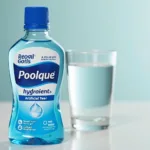Eye Opening Eye Drops: A Comprehensive Guide
- AmazoniaSilva
- Tháng 12 19, 2024
- Zodiac signs
- 0 Comments
Eye Opening Eye Drops are often sought after for their ability to temporarily reduce redness and make eyes appear brighter. But what are they, how do they work, and are they safe? This comprehensive guide will explore everything you need to know about eye opening eye drops, from their various uses to potential side effects.
What are Eye Opening Eye Drops?
Eye opening eye drops, also known as redness-relieving eye drops or vasoconstrictors, work by constricting the blood vessels on the surface of the eye. This reduces the appearance of redness, giving the eyes a whiter, brighter, and more “open” look. These drops are commonly used to alleviate redness caused by allergies, dry eyes, or irritants.
How Do Eye Opening Eye Drops Work?
The active ingredient in most eye opening eye drops is a vasoconstrictor, such as tetrahydrozoline hydrochloride or naphazoline hydrochloride. These chemicals work by stimulating alpha-adrenergic receptors in the blood vessels of the conjunctiva, the membrane that covers the white part of your eye. This stimulation causes the blood vessels to narrow, thus reducing blood flow and redness.
Are Eye Opening Eye Drops Safe?
While generally safe for short-term use, overuse of eye opening eye drops can lead to rebound redness. This occurs when the blood vessels become less responsive to the vasoconstrictor, requiring more frequent use of the drops to achieve the same effect. Over time, this can create a cycle of dependence and worsen the original redness.
Different Types of Eye Opening Eye Drops
There are several types of eye opening eye drops available, each formulated for slightly different purposes:
- Redness relievers: Specifically designed to target redness.
- Lubricating + redness relievers: Combine redness relief with moisturizing ingredients to address dryness.
- Allergy eye drops: Contain antihistamines to relieve allergy symptoms and may also include a redness reliever.
Choosing the Right Eye Opening Eye Drops
Selecting the appropriate eye drops depends on the underlying cause of your eye redness. If you’re experiencing redness due to allergies, opt for allergy eye drops. For dryness, choose lubricating drops with redness relief. If redness is the primary concern, standard redness relievers may suffice. liner pot
When to See a Doctor
While occasional use of eye opening eye drops is typically harmless, persistent redness or other symptoms like pain, blurred vision, or discharge warrant a visit to an eye doctor. These could be signs of a more serious underlying condition requiring medical attention.
Tips for Using Eye Opening Eye Drops Safely
- Follow the instructions: Adhere to the dosage and frequency recommendations on the product label.
- Avoid overuse: Limit use to a few days at a time to prevent rebound redness.
- Wash your hands: Thoroughly wash your hands before and after applying the drops.
- Don’t touch the tip: Avoid touching the tip of the bottle to your eye or any other surface to prevent contamination.
- Consult your doctor: If you have any concerns or experience any adverse effects, consult your doctor or ophthalmologist.
Conclusion
Eye opening eye drops can provide temporary relief from eye redness. However, it’s crucial to use them responsibly and understand the potential risks of overuse. By choosing the right type of drops and following the safety guidelines, you can enjoy the benefits of brighter, clearer eyes without compromising your eye health. Remember, if redness persists or other symptoms develop, consult an eye care professional for proper diagnosis and treatment.
FAQ
- Can I use eye opening eye drops every day? It’s best to avoid daily use to prevent rebound redness.
- How long does the effect of eye opening eye drops last? The redness-relieving effect typically lasts for several hours.
- Are eye opening eye drops addictive? They can lead to dependence if overused, resulting in rebound redness.
- Can I wear contact lenses while using eye opening eye drops? Some drops are not compatible with contact lenses, so check the product label.
- What are the side effects of eye opening eye drops? Possible side effects include rebound redness, burning, stinging, and blurred vision.
- Can I use eye opening eye drops if I have glaucoma? Consult your doctor before using any eye drops if you have glaucoma.
- Are there natural alternatives to eye opening eye drops? Cool compresses and artificial tears can help alleviate redness and dryness.
Other Questions You Might Have:
- What causes eye redness?
- How can I prevent eye redness?
- What are the different types of eye drops?
For further information on eye care and related topics, explore more articles on our website.
If you have any questions or need further assistance, please contact us at [email protected] or visit us at Fifth Avenue, 34th Floor, New York, NY 10118, USA. Our customer service team is available 24/7.
